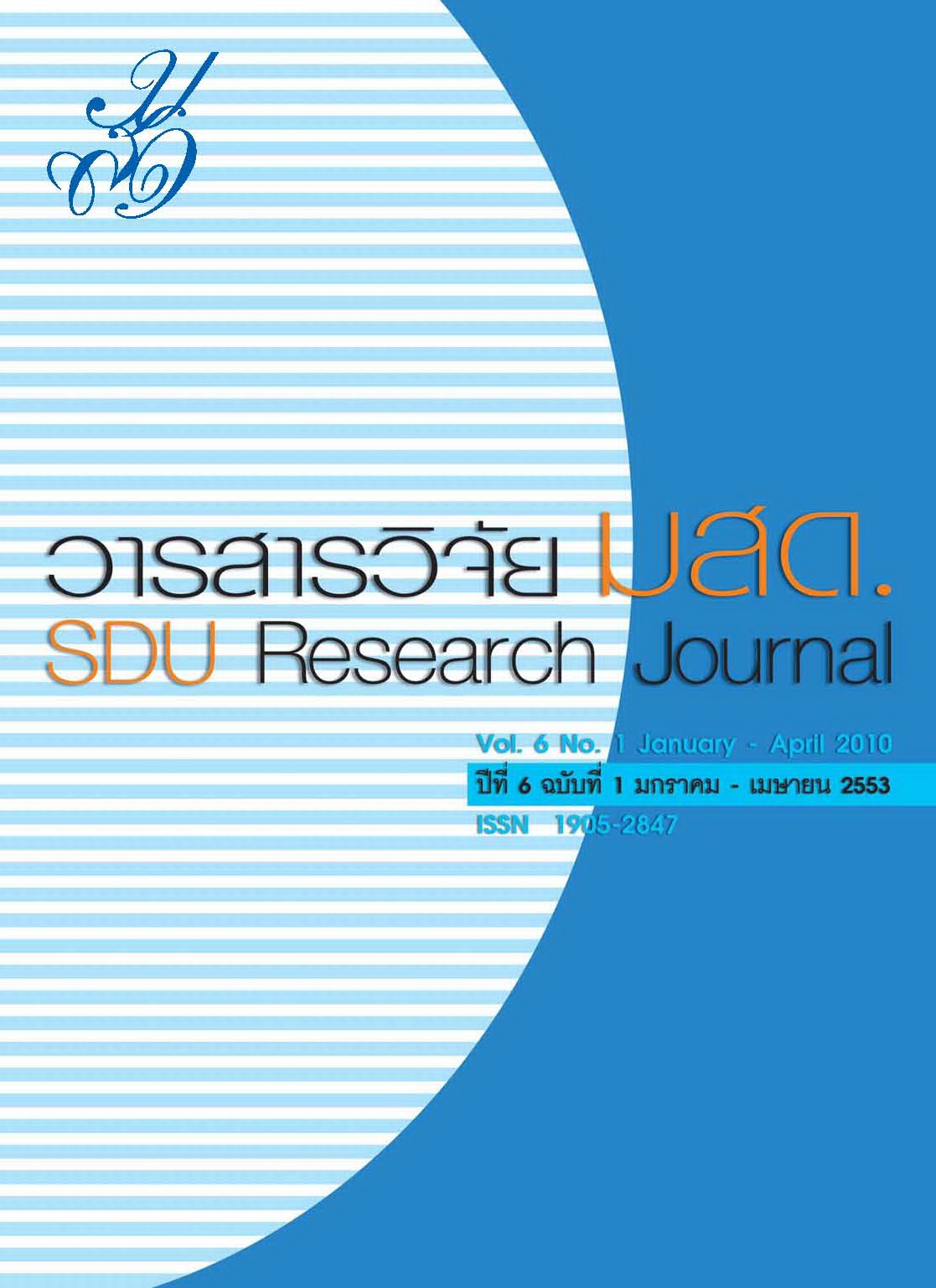การศึกษาพิธีบายศรีสู่ขวัญนักศึกษาใหม่ของมหาวิทยาลัยราชภัฏสวนดุสิต
Keywords:
บายศรี, ขวัญ, พิธีบายศรีสู่ขวัญAbstract
Abstract
The purposes of this research were to study Bai-See Su Kwan Ceremony for new students of SuanDusit Rajabhat University, to study opinions of students toward Bai-See Su Kwan Ceremony, and to compareopinions toward Bai-See Su Kwan Ceremony of Suan Dusit Rajabhat University students. Focus groupdiscussions were conducted involving 12 experts on the ceremony, and a questionnaire was employed to collectdata on opinions toward the ceremony from the sample of 325 Suan Dusit Rajabhat University students. Resultsof focus group discussions revealed that Bai-See Su Kwan Ceremony for new students of Suan Dusit RajabhatUniversity used a seven-tier big Bai-See (banana leave vessel) decorated with flowers, namely, milkweedflowers, globe-amaranths, marigolds, cape jasmines, orchids, and roses; and containing fruits, namely, bananas,tamarind, star gooseberry, pineapples, young coconuts, pomegranates, dragon fruits, oranges, and mangoes; andcontaining desserts, namely, thong yib, thong yod, foi thong, med khanun, khanom chan, khanom tom khaow,khanom tom daeng, khanom tuai foo, and fak thong kaeng buad. Drinks in this ceremony were water, tea, andorange juice. Auspicious objects were peas, sesame seeds, popped rice, betel nuts and betel; and other ceremonyitems, namely, candles, joss sticks, fresh flower garlands, fresh flower vases, a bowl of holy water, fragrantcandles for making holy water, holy threads and holy fragrant powder for anointing at the forehead. Holyprayers employed in the ceremony included the prayer for assembly of gods, prayer to offer sacrificial offeringsto gods, prayer for offering merits, prayer to ask for blessings, prayer to call back the spirits of ceremonyparticipants, and prayer to invoke holy spirits back to heaven.
Data analysis results on opinions of students toward the ceremony showed that students agreed with theceremony as a whole at the highest level, with the rating mean of 4.21 ± 0.41. They also considered theceremony to render good luck and blessings to ceremony participants, with the top rating mean of 4.52 ± 0.42.Comparison of studentsû opinions toward the ceremony revealed that female students agreed with the ceremonyat the higher level than that of male students, with rating mean of 4.28 ± 0.35. Students in the age interval of21-23 years had the highest level of agreement with the ceremony, with the rating mean of 4.28 ± 0.31. Whenclassified by year of study, first year students had the highest level of agreement with the ceremony, with therating mean of 4.25 ± 0.21. When classified by faculty, students in the Faculty of Management Science hadthe highest level of agreement with the ceremony, with the rating mean of 4.24 ± 0.36. Findings from thisstudy indicated that the university should conduct Bai-See Su Kwan Ceremony as an activity for welcomingnew students to the university.
Keywords: Bai-See, Khwan, Bai-See Su Khwan Ceremony








